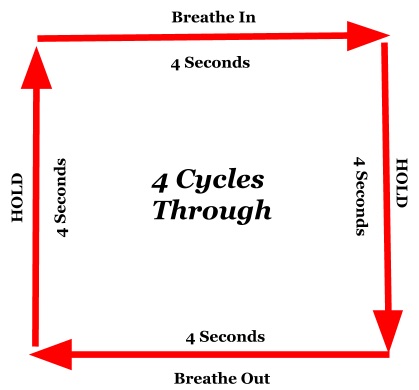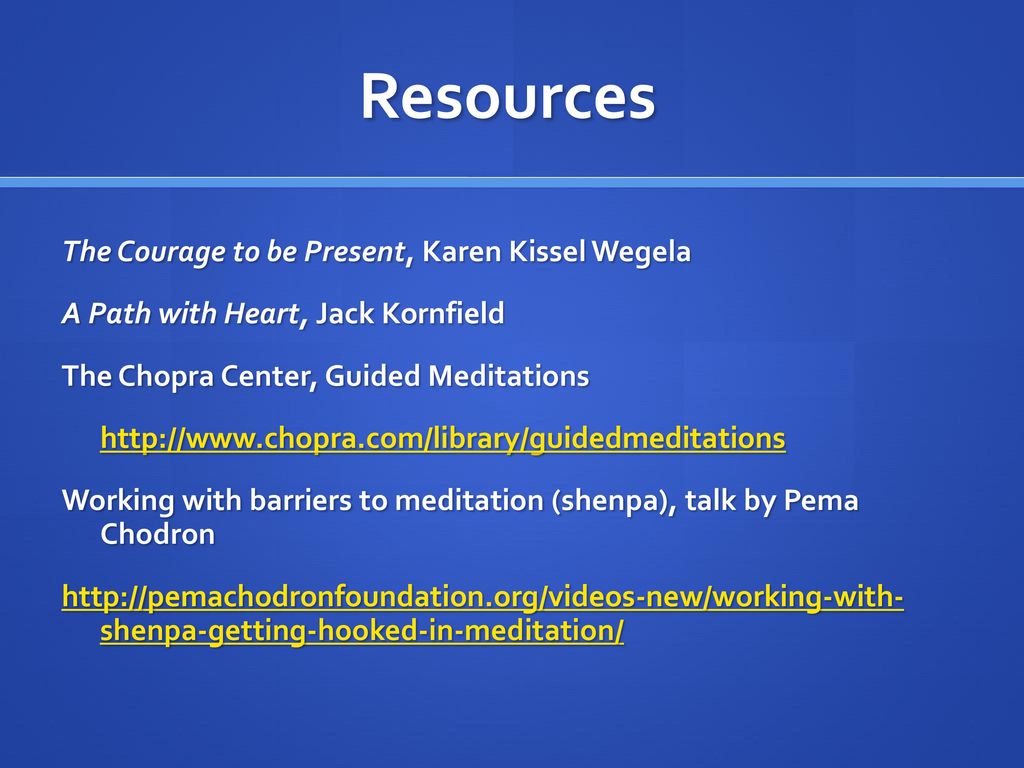
A body scan can be used as a meditation tool to help you understand your feelings and how they impact you. This is especially useful for those who feel overwhelmed by emotions or aren't sure how to feel. Doing a body scanner helps you be more aware your feelings and to feel your physical sensations. Although you might feel anxious or confused the first time you do a body scan, you can learn to relax and return your awareness to it.
Focus on the physical sensations when you do your next body scan. This will help you identify your emotions better. To gain a better understanding of your emotions, you can tune in to your internal and external somatic sensations. Here are some guidelines for performing a body scan meditation. Here are some benefits that can be expected. Once you have the basics down, you can learn more.

You should choose a comfortable position for a body scan. It is best to lie down or to sit for this purpose. It is important to find the most comfortable position so that you can either sit or lie down with no distractions. The best place to perform a body scan is a quiet area where you are comfortable and where you are not distracted. To support your back or shoulders, you might place a blanket under your torso.
A body scan is a great tool to track your weight loss. This machine will display your basal metabolic rate (or BMR), which is your body’s base rate. It will also give you the number of calories you burn before you go to work. This information can help you decide if you should be exercising. If you are exercising too often, it is important to control your caloric intake.
A body scan is a form of meditation you can do with a therapist. It's safe and easy to cope with pain and stress. You can practice it alone or with a therapist. However, your goal should be clear. You should avoid rushing into the practice if you're having a hard time relaxing. You might limit your sessions if you feel stressed.

A great way to develop mindfulness is the body scan meditation. It's one of the most effective ways to start a mindfulness meditation practice. You can listen to the audio meditation to train your mind to stay present and in tune with the parts of your body. You can focus on the parts that you are most interested in and become more aware about subtle energies in your body. The benefits of meditation are endless.
FAQ
What is the difference between a virus and a bacterium?
A virus, a microscopic organism, is incapable of reproducing outside its host cell. A bacterium is an organism that splits itself in two. Viruses have a very small size (about 20 nanometers), while bacteria is larger (up to one micron).
Viruses spread easily through contact with infected bodily tissues, such as saliva and urine, semen, vaginal secretions or pus. Bacteria are usually spread through direct contact with contaminated objects or surfaces.
Viruses can get into our bodies through cuts and scrapes on the skin, bites, and other injuries. They can also penetrate the skin through the eyes, nose or mouth.
Bacteria can get into our bodies through cuts, scrapes and burns, insect bites, or other skin breaks. They can also be introduced to our bodies by food, water and soil.
Both viruses and bacteria can cause illness. Viruses cannot multiply in their host cells. So they only cause illnesses when they infect living cells.
Bacteria can multiply within their hosts and cause illness. They can also invade other parts of your body. Antibiotics are needed to eliminate them.
How can I tell what is good for me?
You must listen to your body. Your body knows best when it comes to how much exercise, food, and rest you need. To avoid overdoing it, it's important that you pay attention to what your body is telling you. Take care of your body and make sure that you're staying healthy.
Which diet is best for me?
Many factors influence which diet is best for you. These include your age, gender and weight. Consider how much energy and low-calorie foods you consume, as well as whether or not you are a fan of fruits and vegetables.
Intermittent fasting is a good option if you're trying to lose weight. Intermittent Fasting means that you eat only specific meals throughout your day and not three large meals. This method may work better than traditional diets which include daily calorie counts.
Intermittent fasting is believed to increase insulin sensitivity. It may also reduce inflammation. This may lead to a decrease in diabetes risk and blood sugar levels. Other research suggests that intermittent fasting may promote fat loss and improve overall body composition.
Is cold a sign of a weak immune response?
Cold makes you weaker because you have less white blood cells to fight infection. Cold can also make you feel better as your body releases endorphins to your brain, which reduce pain.
What are 10 healthy habits?
-
Get breakfast every morning.
-
Don't skip meals.
-
You should eat a balanced diet.
-
Get plenty of water.
-
Take good care of your body.
-
Get enough sleep.
-
Avoid junk foods.
-
Do some type of exercise daily.
-
Have fun
-
Make new friends.
Statistics
- According to the Physical Activity Guidelines for Americans, we should strive for at least 150 minutes of moderate intensity activity each week (54Trusted Source Smoking, harmful use of drugs, and alcohol abuse can all seriously negatively affect your health. (healthline.com)
- According to the 2020 Dietary Guidelines for Americans, a balanced diet high in fruits and vegetables, lean protein, low-fat dairy and whole grains is needed for optimal energy. (mayoclinichealthsystem.org)
- WHO recommends reducing saturated fats to less than 10% of total energy intake; reducing trans-fats to less than 1% of total energy intake; and replacing both saturated fats and trans-fats to unsaturated fats. (who.int)
- nutrients.[17]X Research sourceWhole grains to try include: 100% whole wheat pasta and bread, brown rice, whole grain oats, farro, millet, quinoa, and barley. (wikihow.com)
External Links
How To
What does "vitamin" actually mean?
Vitamins are organic compounds that can be found in foods. Vitamins aid us in absorbing nutrients from the food we eat. Vitamins cannot be made by the body; they must be taken from food.
There are two types if vitamins: water soluble, and fat soluble. Water-soluble vitamins dissolve in water easily. These include vitamin C (thiamine), Vitamin B1 (riboflavin), Vitamin B2 (riboflavin), Vitamin B3 (niacin), Vitamin B6 (pyridoxine), Vitamin C, B1 (thiamine), Vitamin B2 (riboflavin), Vitamin B3 (niacin), and Vitamin B6 (pyridoxine). Fat-soluble vitamins are stored in the liver, fatty tissue and kidneys. Vitamin D, E, K and A are some examples.
Vitamins are classified according to their biological activity. There are eight major groups of vitamins:
-
A - vital for healthy growth.
-
C - important for proper nerve function and energy production.
-
D – Essential for healthy teeth, bones and joints
-
E - Required for good vision & reproduction
-
K – Required for healthy nerves & muscles.
-
P - Essential for strong bones and teeth.
-
Q - Aids in digestion and absorption.
-
R - Red blood cells are made from red blood cells.
The recommended daily allowance (RDA) of vitamins varies depending on age, gender, and physical condition. The U.S. Food and Drug Administration sets RDA values.
For adults 19 years and over, the RDA of vitamin A is 400mg per day. However, pregnant women need 600 micrograms per day because it is important for fetal development. Children ages 1-8 require 900 micrograms per day. Children under 1 year old require 700 micrograms daily, while infants over one year old need 500 micrograms every day. This decreases between 9 and 12 months.
Children aged between 1-18 years require 800 micrograms of sugar per day, while overweight children need 1000 micrograms. Children who are underweight receive 1200 micrograms every day to meet their nutritional requirements.
Children aged 4-8 years old who have been diagnosed as having anemia require 2200 micrograms of vitamin C per day.
2000 micrograms are required daily for good health in adults over 50. Mothers who are pregnant, nursing, or have a high nutrient need will require 3000 micrograms a day.
Adults over 70 need 1500 micrograms daily, as they lose 10% of their muscle every ten years.
Women who are pregnant and lactating need more nutrients than the RDA. Pregnant and breastfeeding women require 4000 micrograms each day during pregnancy and 2500 Micrograms each day after delivery. Breastfeeding mothers need 5000 mg per day when breastmilk is being produced.